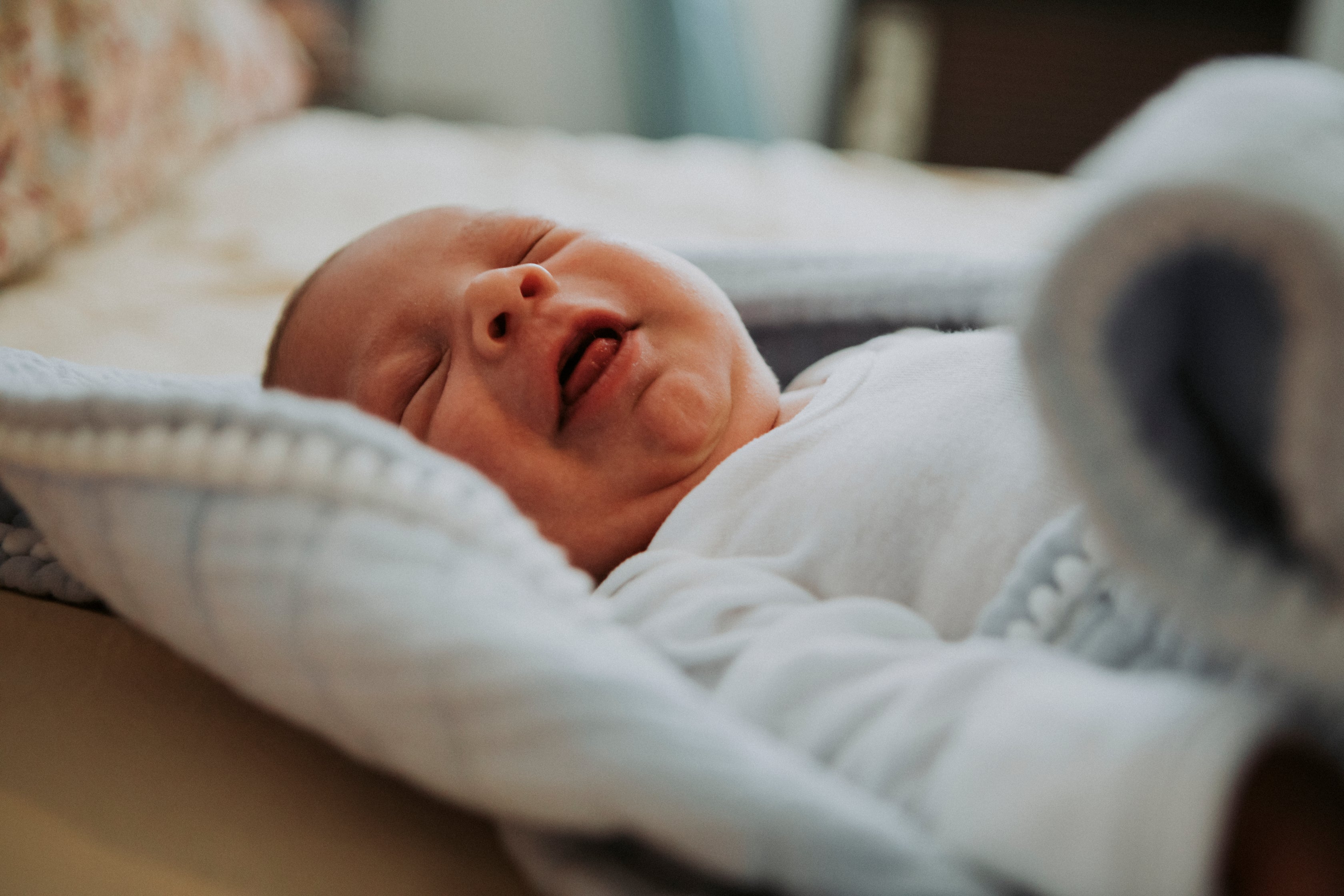You are now convinced about buying a foam mattress for your little one, Emma-Lou. But another existential question is: can baby mattresses contain toxic materials? And then you go back to Google for more information. Some of the results are frightening: some baby mattresses, because of their composition, are said to release toxic emissions! But don't worry, Polysleep will help you choose THE mattress free of toxic substances for your little one!
The chemical composition of a baby mattress must be closely monitored!
Everything starts from observing the little one when she is born and also afterwards as a baby: her immune system is not up to date and has yet to develop. For this reason, she will be particularly sensitive to the toxic products that will be in her direct environment, including through her breathing. And her mattress will be where she spends up to 60% of her sleeping time, which is why it’s important to choose a mattress that is harmless to her!
PVCs and phthalates, baby's sworn enemies!
In these conditions, it’s therefore better that the mattress is a healthy environment for Emma-Lou. But some materials present in cribs can be toxic, starting with polyvinyl chloride, better known under the acronym PVC, which is used in some covers to ensure their impermeability.

It is highly toxic and carcinogenic, and phthalates, agents used to soften vinyl, may be released. Research has clearly established a causal link between these and endocrine disruption in boys. According to a 1997 study published in the International Journal of Cancer, repeated exposure to PVC increases the risk of developing testicular cancer, a fact that has been corroborated by other studies between exposure to phthalates and this same type of cancer. Fortunately, mattress manufacturers can no longer manufacture mattresses containing these damn phthalates. Retailers have also been banned from selling such mattresses. Phew!
Polyurethane foam, potentially dangerous.
But this toxicity doesn't stop at the cover. The polyurethane foam used in foam mattresses can also be dangerous for Emma-Lou. When this material is damaged, it can emit particles as fine as dust, which in turn can release volatile organic compounds such as toluene which, as its name suggests, is very toxic by inhalation.
In addition, polyurethane foam is very sensitive to fire and must therefore be treated to make it fire-resistant. In the past, this treatment was done with toxic chemicals, which is no longer the case. In fact, most manufacturers use flame-resistant fabrics to encapsulate the polyurethane foam.
Allergens, dangerous if Emma-Lou has allergies!
However, it is not only the synthetic chemicals mentioned above that can be dangerous. The problem can also come from your little one, and therefore from you! Indeed, if you have a history of specific allergies in the family, it is possible that your last child may inherit some of them. Others are related to your little one's weak immune system, which could be sensitive to certain compounds that you aren’t sensitive to!
This is the case, for example, with latex, which is used in the composition of certain foam mattresses. Some babies may be sensitive to it. Wool, which can also be used in baby mattresses, is another known allergen. So you should also take this into account when buying a mattress for your child!

“But then Google, how to choose the mattress for the little one?”
“Don’t panic Dominic!”, the search engine answers you in a reassuring way. Once again, it's the real thing; here are a few simple tips in several steps to help you choose the right mattress for Emma-Lou!
-
Set a budget!
- Will it only be used by Emma-Lou, or also by her future little brother John-Preston?
- How long do you want this mattress to last?
From there, you can determine the foam density you need. It is best to choose foam mattresses for babies that are made of high-density material, so that the support provided will be maintained over time. But the higher the density of the materials used in the mattress, the higher the initial price of the mattress will be!
-
Choose the type of material making up the mattress!
Natural materials are preferable except in the case of allergies (e.g. latex), but equally valid alternatives exist for polyurethane foam. In the latter case, the most important thing is to see if the polyurethane foam used is certified by a recognised label guaranteeing that it is safe for your baby.
One of the most reliable certifications is the one called CertiPUR-US. This certification ensures that the foams that carry it, including those of the Polysleep baby mattress:
- Have not been made using products that are harmful to the ozone layer.
- Do not contain flame retardants made of polybrominated diphenyl ethers, triphosphate, or TCEP.
- Do not contain heavy metals, formaldehyde or phthalates.
- Emit very few volatile organic compounds.

-
Make sure the padding and ticking are also certified.
-
Check that the mattress has not been chemically treated at the factory...
...Or was treated with healthy products for your baby. This refers to the certifications, including the CertiPUR-US label, used for the foams that make up the Polysleep Baby mattress. These labels are, once again, THE guarantee that no toxic products have been used to treat the mattress foam or the mattress cover!
You are therefore fully informed on what to look out for in terms of toxicity when buying your next baby mattress! Emma-Lou will be happy with her bed from the very first night! If you would like more information on the Polysleep Baby mattress, visit our website at polysleep.ca! We are sure that you’ll be conquered by the characteristics you will read, and that you will order online. We look forward to counting you among our customers!











